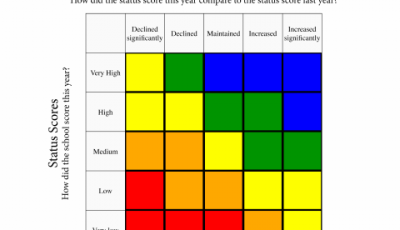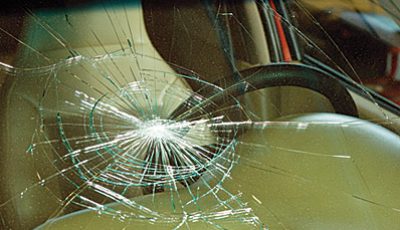Test to stay program allows students to return to school after COVID exposure
Pleasant View Elementary School student Madison Willmore got to go to school this week despite having been exposed to COVID-19 a few days earlier thanks in part to a new coronavirus testing program that the school district has implemented, and will be expanding to some other schools starting next week.

Madison Willmore was tested for COVID after being exposed a few days earlier. Willmore was able to return to school thanks to a new “test to stay” program at Pleasant View Elementary School.
When Willmore pulled up at school Tuesday morning a cellphone call was made to the school, and school nurse Tammy Morris greeted her at the curb outside the school entrance. After getting the parent or guardian’s permission, Morris asked a few questions, such as when the student was exposed, and did a quick check of vital signs.
Morris then got the nasal swab ready to perform the quick “test to stay.” Unlike previous COVID-19 testing, this swab doesn’t have to be stuck up your nose halfway to your brain, metaphorically speaking.
Morris noted that the swab goes about one inch into the nose, and is swirled around five times in each nostril.
While the student and a parent or guardian waits outside in the vehicle, Morris takes the swab into the school and soaks it in a solution inside a test vial for one minute. Then a test strip is put inside the vial, and Morris waits 15 minutes for the results.
If the test is negative, then the student gets to go inside and start their school day. If the student tests positive, then the parent or guardian can take the student home or to a healthcare provider to find out what they need to do next.
The testing kit used is the QuickVue SARS Antigen Test, which is a grade or two above what you would get in an at home testing kit that you might buy off the shelf at your local drug store.
“We’ve only been doing this a couple of days, but we have already seen it put kids back in school that otherwise would have been at home or trying to learn from an at-home situation. We know the most important thing is having them here and in seat. We are pleased with that aspect of it,” said Pleasant View Principal Bobby Gibbs.
Gibbs said that parents have overall had a very positive response to the testing and seem to appreciate it the ease of it.
In addition, they can find out in about 20 minutes whether their child has tested positive for COVID-19, and if not send them on to school.
“I think from that standpoint it is a benefit to parents. I think it is a great benefit to the student. I think all around it is a great thing,” he added.
Gibbs noted that his school had about 22 students out of about 250 students total on Tuesday, who had been exposed to COVID-19 and were either quarantining or came to school and got tested so they could return to class if they had a negative test.
Morris said that the number of students being tested each day varies. On Monday, she tested five students and had tested about seven students so far as of about 8:30 a.m. Tuesday.
Gibbs said that he expected that number to increase as the morning went on.
Gibbs said he thinks that the number of COVID-19 exposed students, who get tested to see if they can come back to school, will increase once word spreads about how the process works and how easy that it is.
Gibbs said the most negative comment that he has heard from parents about the testing was that parents weren’t sure if they wanted to get their kids swabbed.
Other parents asked him if they could bring their child back on day seven of the modified quarantine and have them tested then to see whether they were positive or could return to school then.
Whitley County Superintendent John Siler said that districtwide over the past week, the number of quarantined students due to COVID-19 exposure has varied from 148 to 187 out of roughly 4,200 students total.
Next week, the district hopes to expand its curbside COVID-19 testing program to three additional elementary schools, and two additional schools after that for a total of sites at six schools, which can perform the tests to stay on students.
In addition, there will be a health clinic at the middle school, which can also perform the curbside testing in addition to other duties.
“We hope that as this gets further down the road, more parents will be open to using this and it will be able to keep their kids in class,” Siler said.








